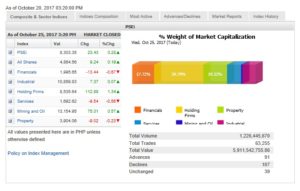The peso yesterday slid to a fresh 11-year low of 51.77:$1 mainly on global market uncertainties over who United States President Donald Trump will appoint as head of the influential US Federal Reserve.
This was the weakest since July 25, 2006’s 51.87:$1.
At the Philippine Dealing System, the peso hit an intraday low of 51.77:$1 and a high of 51.63:$1.
The total volume traded jumped to $773 million from Tuesday’s $551.2 million.
During a luncheon meeting hosted by the European Chamber of Commerce of the Philippines, Bangko Sentral ng Pilipinas Governor Nestor A. Espenilla Jr. said that since the exchange rate was a policy instrument and not a target, “it was allowed to move in line with global and domestic shocks.”
“All of the fears and uncertainties in the world are reflected in the day-to-day volatility of the exchange rate. We allow it to reflect that because that is the reality the economy operates under,” Espenilla explained.
While the BSP does tactical intervention to ensure that the volatility would not be excessive, Espenilla said “we don’t actually define what is not excessive.”
Espenilla said the weakening of the peso had been “moderate and gradual.”
“Today, it is under pressure again because of the perception that President Trump is about to appoint an anti-inflation hawk as the next Federal Reserve governor,” the BSP chief said.
Espenilla said the BSP believed the peso would remain generally stable over the medium-term horizon.
“Why is that? The economic fundamentals of the Philippines today are sound—debt is low, both domestic and external debt, inflation is low, the economy is growing, the current account deficit—which has started to emerge—is moderate, and the Philippines today is a very different economy than the crisis economy in the 1980s when our reserves were negative,” Espenilla said.
“Today, our reserves are almost nine months’ worth of imports of goods and services. We are investment grade. We have market access, even the IMF [International Monetary Fund] is borrowing from the Philippines. For the longest time, the Philippines was a prolonged user of IMF resources. Today, we are lending to the IMF so the IMF can lend to others that need the resources,” Espenilla added.
“So it’s a very different Philippines that we are dealing with, that is why we have some degree of confidence that we can survive uncertainties,” Espenilla said. —BEN O. DE VERA


